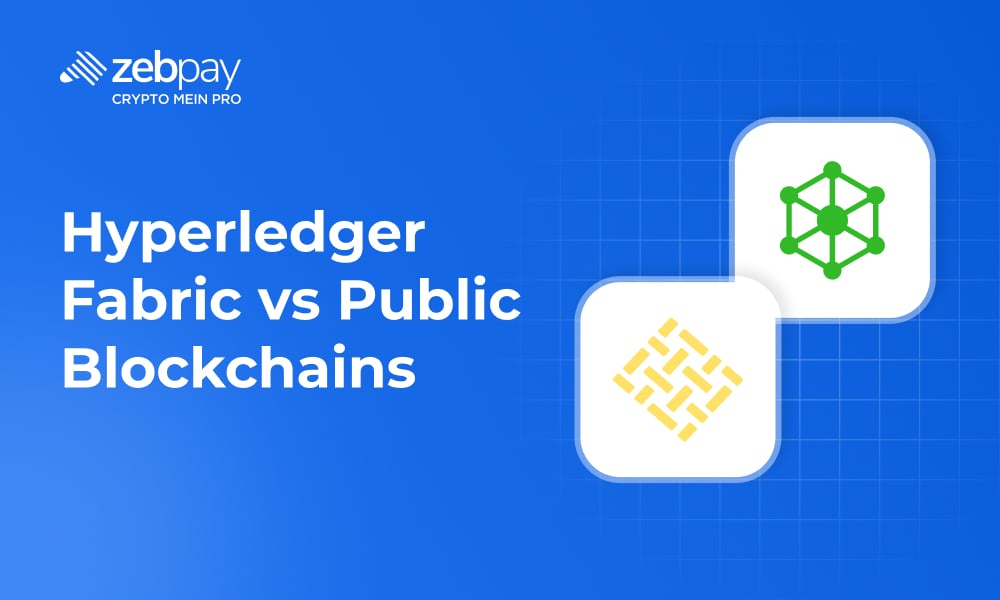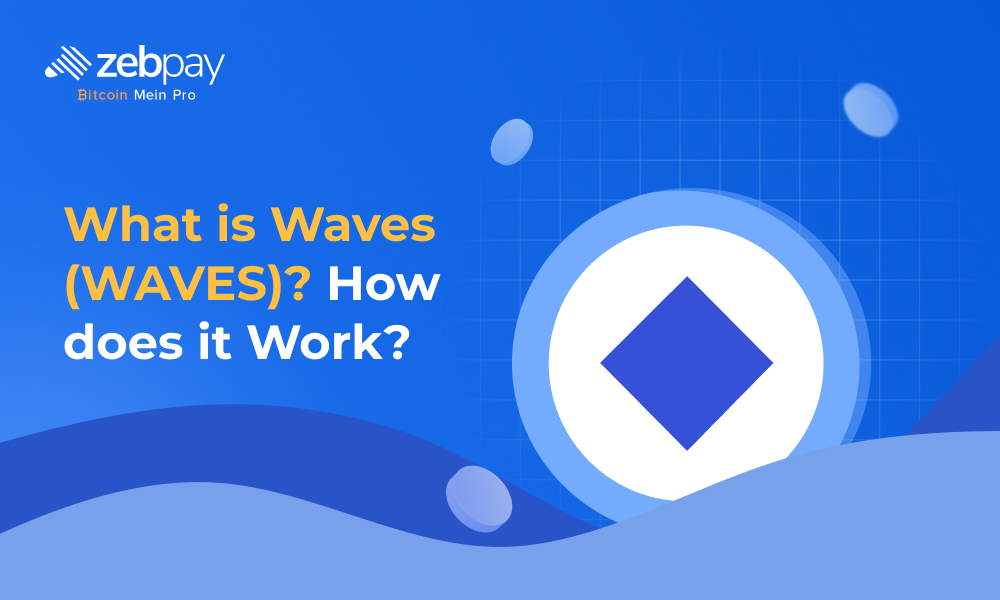Analysis of different areas of blockchain has led to the question of selecting between public and private blockchain networks. For corporations and builders, it has become imperative to choose between the Hyperledger Fabric, a private blockchain network, and public blockchains, which include Bitcoin (BTC) and Ethereum (ETH), as each offers specific functions, benefits, and industry-based packages. Based on how things stand, the international blockchain sector is predicted to grow from $20.1 billion in 2024 to $248.9 billion by 2029, having a 65.5% CAGR for the given timeline, as per Markets and Markets, a market research platform. This article focuses on the operational, technical, and strategic concerns surrounding Hyperledger Fabric and public blockchains.
Introduction to Hyperledger Fabric and Public Blockchains
In layman’s terms, Hyperledger Fabric refers to an open-source, permissioned blockchain infrastructure associated with the Hyperledger Project of Linux Foundation (LF), a non-profit organisation. On the contrary, public blockchains are open and decentralised networks that permit anybody to associate, access information, and submit and validate transactions.
As things stand, Hyperledger Fabric facilitates the networking of private blockchains, which can be used on a single platform or a consortium of platforms collaborating in blockchain development. However, public blockchains operate on an open and decentralised network which doesn’t restrict access to anybody.
Read more: What Are Blockchain Layers
Key Differences Between Hyperledger Fabric and Public Blockchains
| Hyperledger Fabric | Public Blockchains | |
| Permission model | Controlled access. | Free to access. |
| Transparency & Confidentiality | Details remain exclusive to selective parties. | Available to the public. |
| Governance | Handled by a particular group of organisations. | Follows a community-driven approach. |
Use Cases of Hyperledger Fabric in Industry
| Use case | Description |
| Healthcare | Ensures book keeping of patients’ records and interoperability among healthcare networks. |
| Real estate | Handles property transactions and ownership records. |
| Financial services | Helps with transparency of transactions, along with other tasks such as trade finance, cross-border payments, among others. |
| Automotive industry | Maintains transportation records, parts provenance, and supply chain logistics. |
| Intellectual property | Businesses can reduce infringement risks and increase accuracy of IP transactions. |
Advantages and Disadvantages of Hyperledger Fabric
Advantages
Modularity: Its modular architecture enables the scalability of internal components such as consensus mechanisms and smart contracts, allowing organisations to tailor the system to their specific needs.
Flexibility: Supports a variety of intellectual network design approaches, and enables flexibility to adapt to applications and requirements.
Smart Contracts (Chaincode): Uses smart contracts, called chaincode, that can be written in programming languages like Go and JavaScript to facilitate development and integration.
Disadvantages
Complexity: Difficulties can arise in setting up and maintaining the technology, due to its modularity and need for specialised knowledge.
Development costs: Designing and implementing smart contracts (chain code) can be a steep learning curve, over its requirement for additional development efforts.
Limited ecosystem: In comparison to Ethereum and other public blockchains, Hyperledger Fabric has a smaller ecosystem and community, which can affect the availability of third-party tools and support.
Advantages and Disadvantages of Public Blockchains
Advantages
Decentralisation: Public blockchains operate on a decentralised network of nodes, reducing reliance on central authority and increasing resilience to failure and censorship.
Security: Using consensus mechanisms such as Proof-of-Work (PoW) or Proof-of-Stake (PoS) ensures the integrity of the blockchain by making it impossible to modify past transactions.
Open participation: Public blockchains are open to everyone, allowing greater participation in crypto mining, verifying transactions, and contributing to network development and security.
Disadvantages
Privacy concerns: Transactions on them can be monitored by anyone, potentially creating privacy concerns for users who want to keep their transactions safe.
Regulatory uncertainty: The regulatory environment around them is subject to change, which can create compliance challenges.
Fork risk: They are vulnerable to forks (splits in the blockchain), which can lead to network fragmentation and potential conflicts within the community.
Security Features
Hyperledger Fabric
Identity management: Using a robust public key infrastructure (PKI) based identity management system to verify and authenticate participants, ensures that only authorized entities can connect to the network.
Data encryption: All data transmitted over the network is encrypted using TLS (Transport Layer Security), which ensures that encrypted data is protected from unauthorized access.
Statistical methods: It maintains detailed information and statistical methods for all services, along with enabling tracking and accounting for network activity.
Public blockchains
Approval methods: Various approval methods, such as PoW or PoS, are used to protect transactions and avoid double-spending and illegal practices.
Cryptographic hashing: Transactions and blocks are created using cryptographic algorithms, creating a secure and immutable record. Each block contains the hash of the previous block, linking them together and protecting them from tampering.
Public Key Infrastructure (PKI): Participants use public and private keys to initiate transactions and prove ownership, ensuring that only legitimate users can approve transactions.
Consensus Mechanisms: Hyperledger Fabric vs Public Blockchains
Hyperledger Fabric
Modular consensus: This technology supports a modular approach to consensus, which means that different consensus mechanisms can be used depending on the needs of the network. Examples of this include Practical Byzantine Fault Tolerance (PBFT), which fosters consensus among nodes even if a few nodes act maliciously, and Raft, which emphasises fault tolerance and efficiency.
Activity-based consensus: It can adapt to the consensus process based on application and network requirements. This flexibility allows organisations to tailor brainstorming methods to their specific needs.
No mining: It does not rely on mining or PoW. Instead, it focuses on fast and energy-efficient consensus algorithms, suitable for enterprise applications.
Public blockchains
PoW: It’s the consensus mechanism used by BTC and other blockchains. Through it, miners solve complex mathematical problems to consolidate transactions and create new blocks. This requires a great deal of computing power and energy.
PoS: Ethereum 2.0 and other blockchains use this consensus paradigm. Validators choose to create new blocks and are willing to “stake” them as collateral to validate the transaction, based on the amount of crypto they hold.
Delegated Proof-of-Stake (DPoS): This is a variation of PoS used by EOS and other blockchains. Participants choose a small number of agents to verify transactions and create blocks on their behalf.
Proof of Authority (PoA): Used in public blockchains and some private networks. Validators are pre-approved and accredited companies that accept transactions and generate volumes.
Read more: What is proof of Authority
Proof of Place and Time (PoST): Used by Chia and other blockchains. Validators show that storage space has been allocated, along with waiting for a specific period before proceeding with the transaction’s authenticity.
Scalability and Performance
Hyperledger Fabric
Scalability
Modular architecture: The modular design of this technology allows for scalability through organisations that enable customization and optimization of a variety of features, such as consensus mechanisms and transaction processing.
Parallel processing: It supports parallel execution of transactions, where different tasks can be processed, simultaneously, improving throughput and reducing latency
Private channels: The use of private channels enables better scaling within specific groups of participants, as transactions within these channels do not affect the wider network.
Performance
Proof of concept: Its proposed options, such as PBFT and Raft, provide speedy authenticity of transactions compared to PoW. Optimization of these methods enables high performance and low latency.
Transaction handling: It handles transactions in a way that separates the support side from the commit side, increasing performance by diminishing workload on individual nodes.
Customizability: Organisations can tailor the performance characteristics of their networks based on their specific requirements, and optimise for transaction speed, throughput, and resources.
Public blockchains
Scalability
PoW: Public blockchains using PoW, such as Bitcoin, face scalability challenges due to the time required to solve cryptographic puzzles. This limits the number of transactions that can be processed per second and can cause network congestion.
PoS: PoS blockchains, such as Ethereum 2.0, offer better scalability compared to PoW by reducing computational load. Validators are selected based on the amount of crypto they stake, allowing for faster transactions.
Layer-2 solutions: Many public blockchains are exploring Layer-2 scaling solutions, such as state routes and rollups, to increase transaction flexibility and reduce traffic without changing the blockchain’s base layer.
Performance
Transaction throughput: Public blockchains tend to have lower transaction throughput compared to permissioned blockchains, due to broader requirements for approval on a decentralised network. This can result in slower transaction times and higher costs during peak periods.
Energy efficiency: Unlike public blockchains based on PoW, criticised for high energy consumption, which can affect overall operations and environmental sustainability, PoS and other approved mechanisms often deliver increased energy efficiency.
Network congestion: High demand can cause network congestion, affecting productivity and increasing the cost of services. Public blockchains are working on solutions to address these issues and improve efficiency.
Future Trends and Developments
Hyperledger Fabric
| Improved connectivity | With improvements in cross-chain communication protocol standards, seamless data exchange becomes possible. |
| Advanced encryption | Incorporation of advanced cryptography techniques and privacy protection technologies to ensure privacy. |
| Smart Contract development | Sophisticated and flexible smart contracts can support new programming languages and advanced development tools. |
Public blockchains
| Scalability solutions | Layer-2 protocols (rollups, state channels) and sharding can improve transaction throughput and reduce network congestion. |
| Energy efficiency | Focus on development of sustainable mining and adopting green energy. |
| Decentralised Finance (DeFi) growth | Development of decentralised exchanges, credit platforms, and yield farming. |
Read more: Development of decentralised exchanges.
ZebPay blogs serve as a great source of knowledge for all things crypto-related. Click the button below and join the millions trading on ZebPay.







